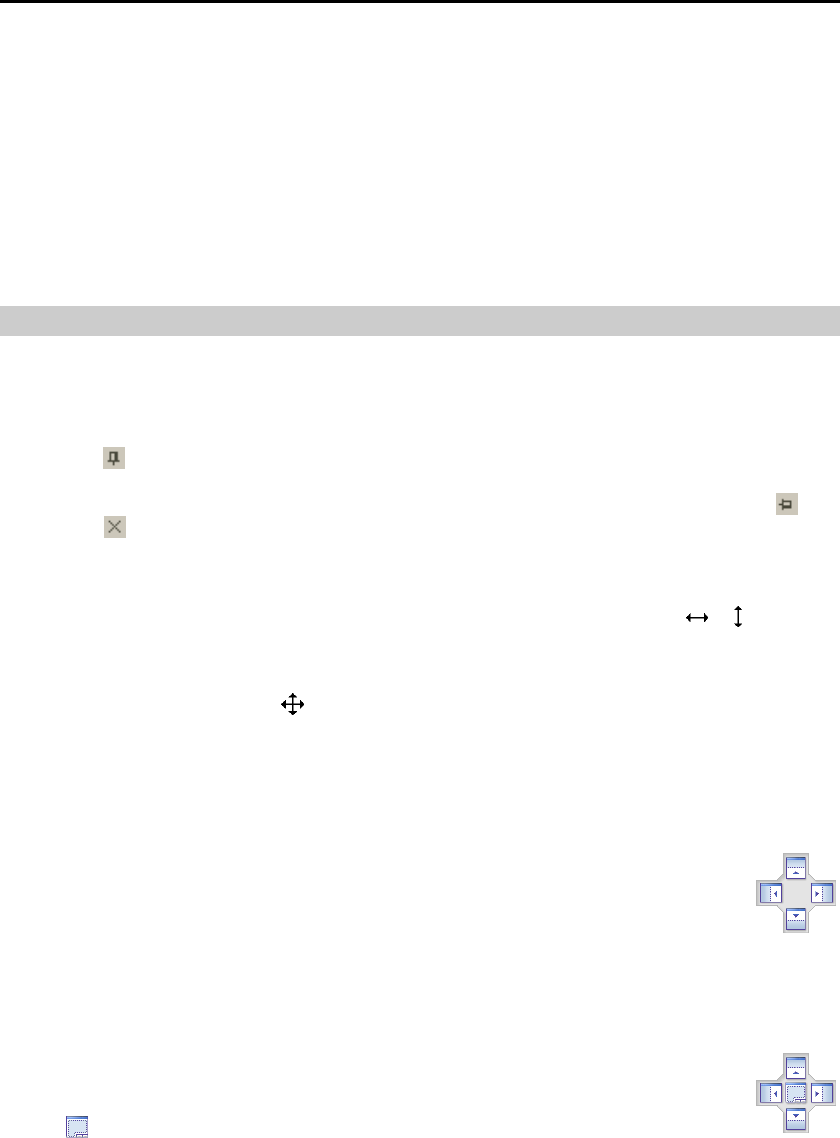
User’s Manual
10
NOTE: There might be a problem with screen display or screen update due to low image transmission
speed when using Microsoft Windows Vista or later operating system. In this situation, it is
recommended that you disable the Auto Tuning capability of your computer.
Run the Command Prompt with elevated administrator permissions (Go to the Start Menu →
Accessories → Command Prompt → Click the right mouse button and select the Run as
administrator option). Then enter “netsh int tcp set global autotuninglevel=disable” and click
the OK button. Restart your computer to apply the changes.
If you want to enable the Auto Tuning capability again, enter “netsh int tcp set global autotuninglevel=
normal” after running the Command Prompt with elevated administrator permissions. Restart your
computer to apply the changes.
3.2 Panel
DX-PC For View has many powerful tools that can be used to streamline your work. Most of the tools are
located on 12 docking panels that can be placed on the screen where they are most convenient. You can
keep your screen free of clutter by displaying only the panels you use most frequently.
Clicking the
icon at the upper right corner of a panel enables the auto-hide feature. Tabs for auto-hidden
panels are displayed on the edge of the screen. Scrolling over an auto-hidden panel tab will cause the panel
to "fly" out. You can cause the panel to lock back into its original display position by clicking the
icon.
Clicking the
icon hides the panel without a tab. Hidden panels can be displayed by selecting them from
the drop-down menus.
Panels can be resized, moved and combined with other panels creating a workspace that fits your needs.
To resize a panel, scroll the cursor over the edge of the panel until the cursor changes to
or . Then click
the left mouse button and drag the panel border to enlarge or reduce its size.
To move a panel to a different position on the screen, scroll the cursor over the title bar of a panel that has not
been auto-hidden until it changes to
. Once you click and drag, position arrows will display on the screen.
The four position arrows along the outer edges allow you to place the panel along the given edge independent
of the other panels. When you drag the panel over a position arrow, a transparent blue box will display
showing the new panel position. If you are satisfied with the position, release the left mouse button and
the panel will move to its new position.
You can also move a panel so that it is associated with another panel. To do this, drag the
panel over the panel you want it associated with, and the icon with four position arrows will
center over that panel. Scrolling the cursor over the icon arrows will cause a transparent blue
box to display where the panel will be located. If you are satisfied with the position, release
the left mouse button and the panel moves to its new position.
It is possible to combine panels so that they take up less space on the screen. Combined panels have a row
of tabs across the bottom. Clicking a tab brings that panel to the foreground.
To combine panels, move the cursor to the title bar of the panel you want to move. Click and
drag the panel onto the panel you want to combine it with. If the panels can be combined, the
four-position arrow icon will have a tab symbol in the center. Drag the cursor over the tab
symbol
, and a new tab appears on the panel. Release the mouse button and the panels will
now be combined.
The layout possibilities are virtually unlimited. With a little experimentation you will be able to lay out
the screen so that it best meets your workflow.
